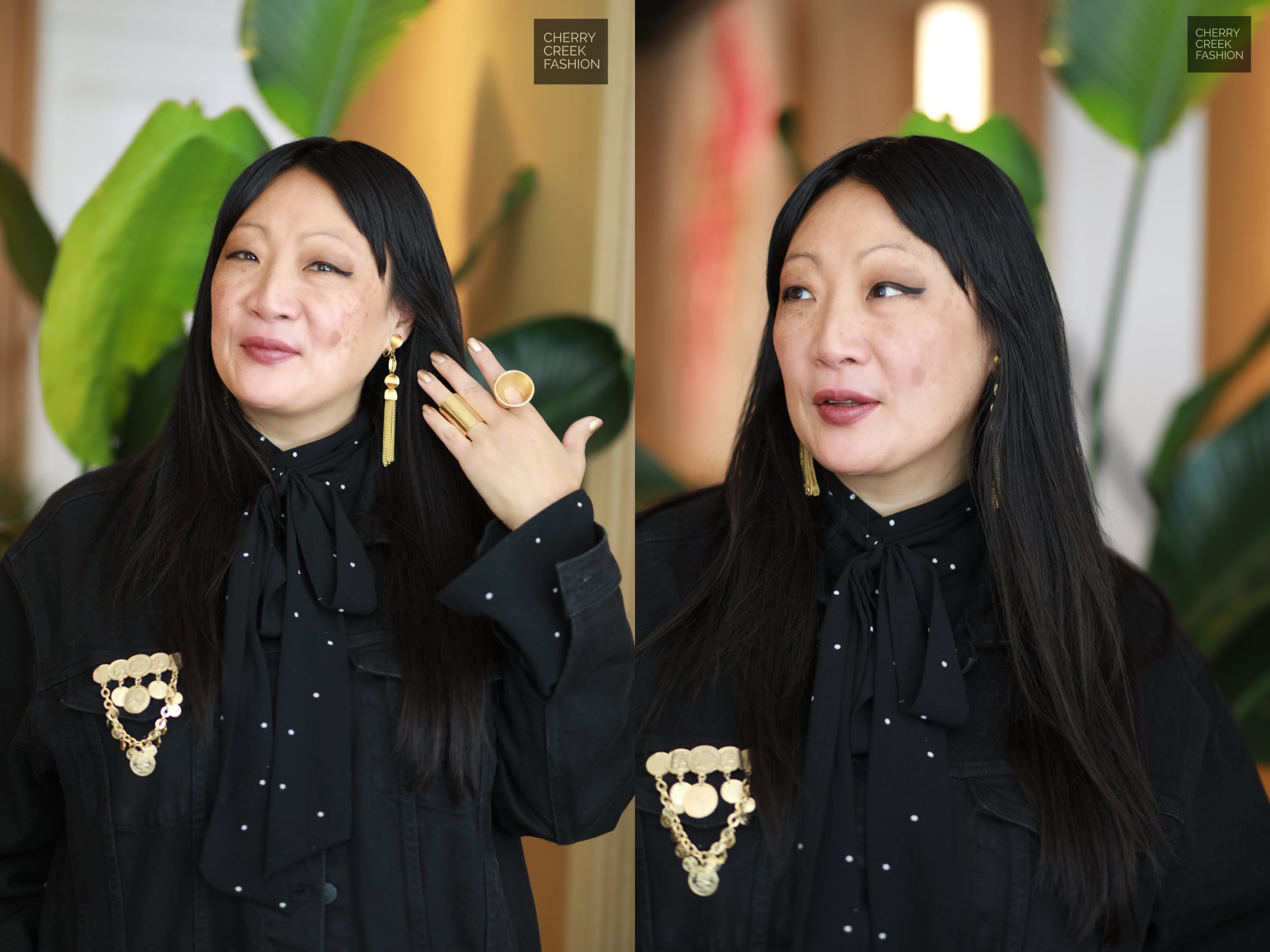Jane Burke is Bringing the World to Denver
PHOTOGRAPHED BY ESTHER LEE LEACH
WRITTEN BY ANNIE BLOJ // CULTURE & STYLE EDITOR
The minute I met Jane Burke, I knew that I wanted to spend an afternoon getting to know her better. Currently the Curatorial Fellow for the department of Textile Art and Fashion at the Denver Art Museum, Jane is always preparing multiple exhibitions at the same time. I’ve always been obsessed with the inner workings of museums. With the push to highlight and expand the fashion and textile narrative at the DAM, my favorite worlds collide through her experiences!
Annie Bloj: Jane, you have created a career out of working in the arts. How did you get started; have you always been interested in the creative world?
Jane Burke: Since as far back as I can remember, I’ve always been attracted to art. It provided an escape for me early on. Simultaneously, I was infatuated with dress-up, dolls, and sketching fashion. By junior high, I began to consume high fashion in magazines, including W—which was just a newspaper back then. Perhaps because I studied it so religiously, I was very intimidated by it at the same time. Even though I always wanted to be a fashion designer, I buckled under the pressure of simply stepping foot in FIT (Fashion Institute of Technology, NY) during a prospective student tour when I was 17.
I ended up finishing my bachelor’s degree at CU Boulder in studio art with an emphasis on painting. It was during this time that I discovered my love for Asian art history, which led me to Honolulu, halfway back to China, in pursuit of an interdisciplinary master’s degree in Asian Studies and Mandarin at UH Manoa. Concurrently, I received curatorial training at the Honolulu Museum of Art (HoMA), The Contemporary Museum (now merged with HoMA), and The East-West Center Gallery. My academic, professional, and personal interests led me to write my thesis on how the display of Chinese minority/indigenous costumes in museums and galleries is used to construct and reinforce the formation of identity.
AB: How did you find your way to working at the Denver Art Museum (DAM)?
JB: To continue the timeline above, prior to the DAM, I was a collections manager at the Honolulu Museum of Art (HoMA), where I initially began in 2006 in the Asian Art department. My office was located beside HoMA’s textile curator, Sara Oka, next to the textile vaults. Even though I was charged with taking care of all the collections, Sara became my mentor. She taught me more about historical and contemporary Asian textiles and fashion.
This was very fortuitous, as textile and fashion departments in encyclopedic museums are rare, to begin with. It was difficult to find a way in even then, as a textile curator one must have a sense of every region of the world and every time period. After studying and being exposed to Asian textiles alone, I felt equipped enough to apply to the curatorial assistant position at the DAM. I was hired by the curator who preceded Florence Müller, Alice Zrebiec, whose specialization was European tapestries. Florence arrived less than two years later and the focus of the department shifted dramatically. Because of my voracious intake of fashion since the 80s, I was able to easily switch gears.
AB: Do you have a favorite part of the process of putting together curatorial projects?
JB: Installing a show is always a highlight as it’s the moment when you see your ideas come alive. Anyone who works in production knows there is an alchemical aspect in how everything aligns. Each show always has a different set of variables, whether it be working with a living artist/designer, collector, or other institution, but your role as an intermediary or editor stays the same.
AB: How do you see the intersectionality of fashion and art? What do you think makes fashion exhibits a draw for visitors to art museums?
JB: Although fashion carries the suffix of design it has always lived next to and under the umbrella of fine art. Historically, all the great couturiers were well-versed in art history, drawing regular inspiration from and collaborating with artists. This intersection has only become more ubiquitous as the luxury industry continues to regularly commission contemporary artists. However, fashion only secured a firm foothold in museums just over a decade ago with the rise of designer retrospectives. Since then, the appetite for fashion in museums has rapidly increased, to the extent that fashion is now strategically used as “pop culture” bait to lure younger audiences into museums.
Fashion and material culture provide a sociological lens into the zeitgeist of any given era, though fashion history is still being written as we speak. Prior to the 80s, designers did not anticipate fashion would be collected in museums and so fashion was not kept. In the past few decades, luxury houses have realized how important assembling an archive is to reinforce their brand identity. Houses who have the means to do this enable their creative directors to mine the original DNA of the house and in so doing keep the house’s “heritage” alive by repeating certain fashion codes.
AB: Recently you guest curated a few projects outside of the DAM. Most notably, your Colorado Asians exhibition at Artworks Center for Contemporary Art in Loveland, which highlighted artists from the AAPI community this past spring. How do these collaborations come together; what do you enjoy about these freelance curatorial projects?
JB: These past few projects were born out of a restlessness brought on by the pandemic and a desire to practice curating outside of a museum. I am lucky to have a strong network and planted a few seeds which quickly came to fruition. For the Colorado Asians exhibition, the Director of Artworks approached me to guest curate a show to coincide with AAPI heritage month. It sadly also overlapped with the rise in Asian American hate crimes. I was especially proud to offer a safe space for local AAPI artists to cultivate a sense of solidarity and in turn a sense of belonging. This show was very personal to me having grown up in northern Colorado as “the only Asian.” I am still extremely interested in identity politics, especially in this current socio-political climate, which is why I am grateful for the opportunity to curate another exhibition featuring five local Asian American artists, entitled, Another Angle, at DU this month. This show has allowed me to question the consequences of our recent collective call for “diversity” in its potential to further tokenize BIPOC.
At the same time, I have been gravitating towards contemporary artists who are working with fiber in a way that transcends the stereotype of women’s work/domestic craft. I had the chance to present two international artists, George Bolster and Dong Kyu Kim, at RULE Gallery in Marfa, Texas over the summer in an exhibition entitled, Imminent Archive. The materials and methods they use are indicative of the current resurgence of old-world techniques, in their cases in response to neoliberalism and our global environmental crisis. Although I learned a tremendous amount working outside of the museum this past spring/summer, I am looking forward to focusing on the next three museum projects I have on my plate over the next two years. Stay tuned!
AB: Jane, as always, it's been a sincere pleasure getting to know your story better. I am so happy to be able to share your view on how fashion and textiles not only serve a basic function but can also be elevated to an art form that reflects our culture in a particular space and time. I look forward to enjoying the projects you are working for the future!



